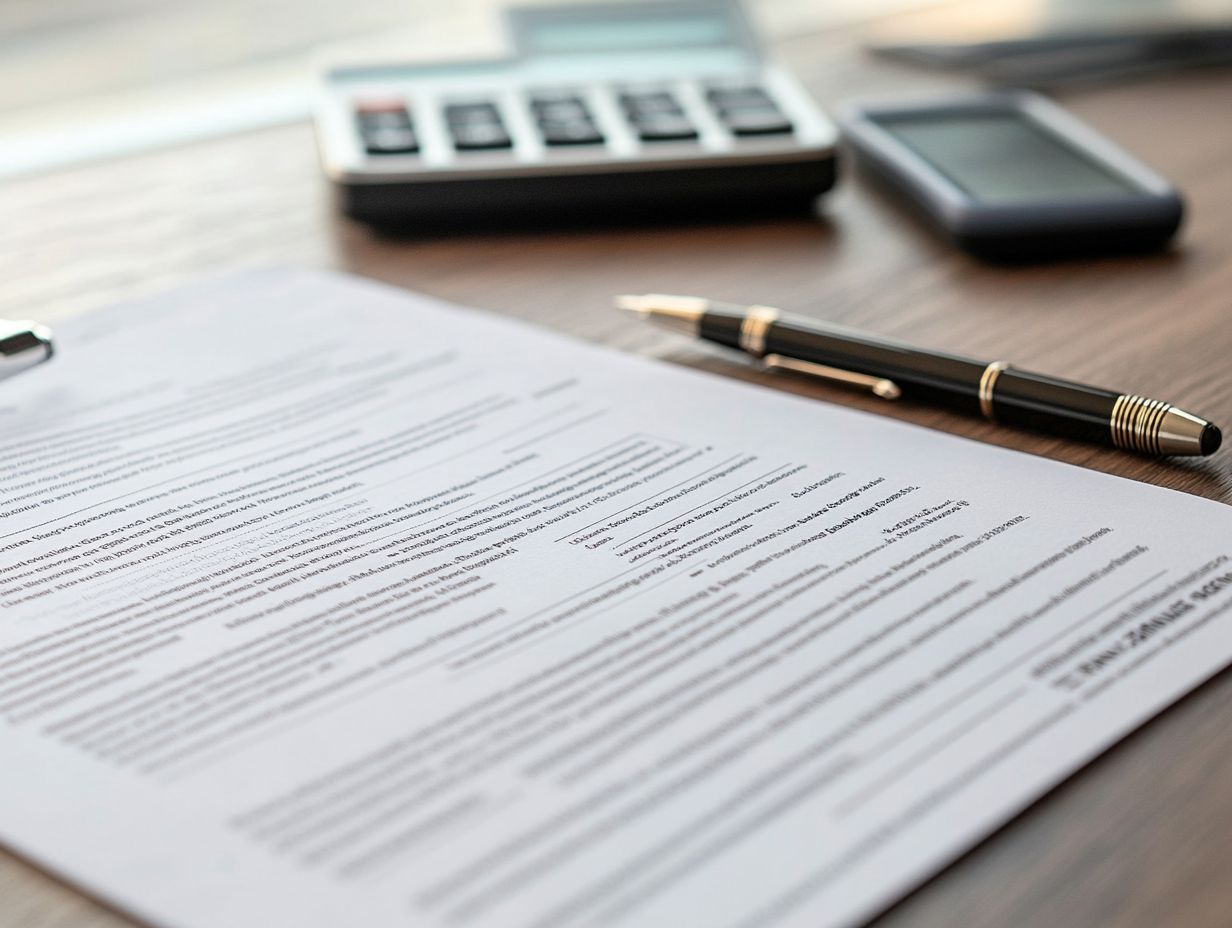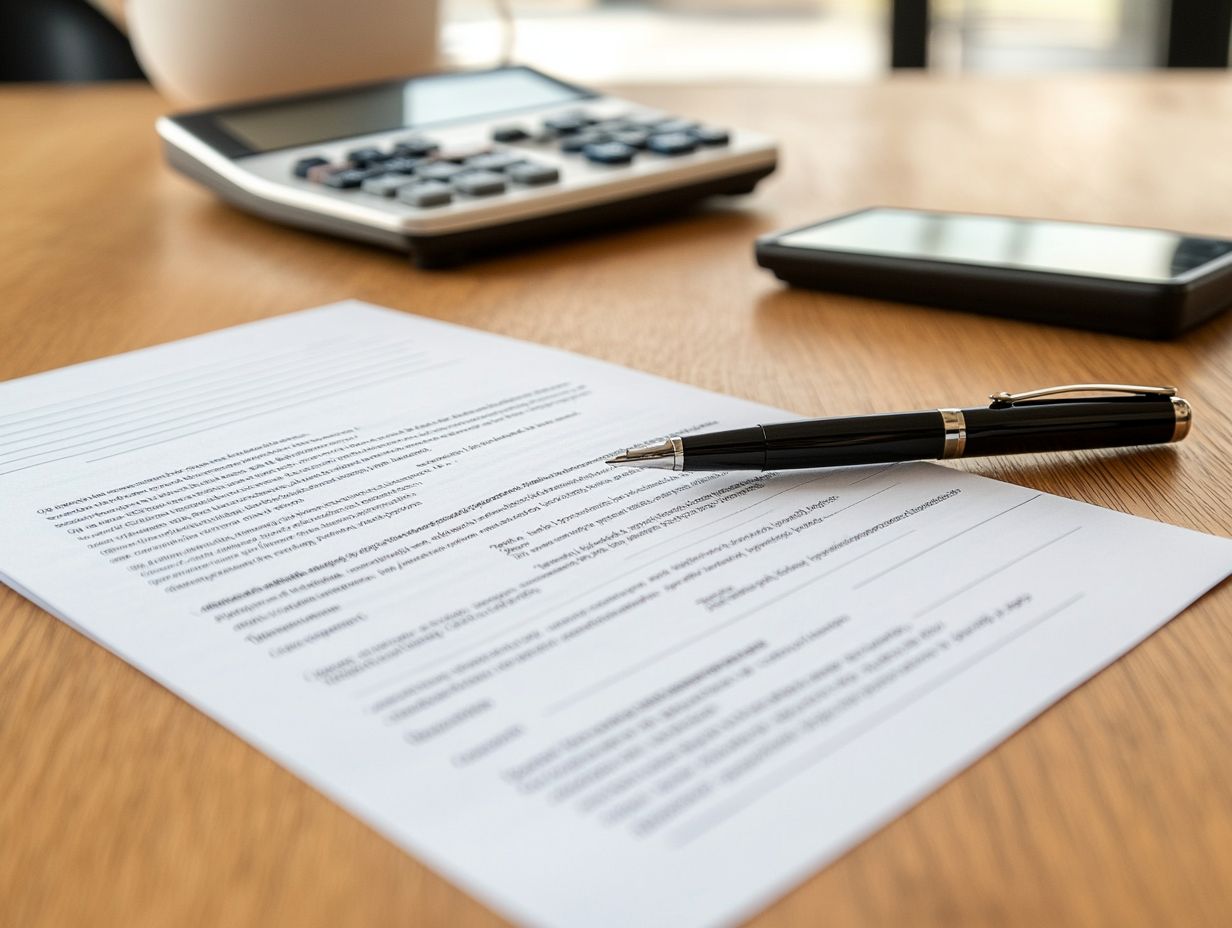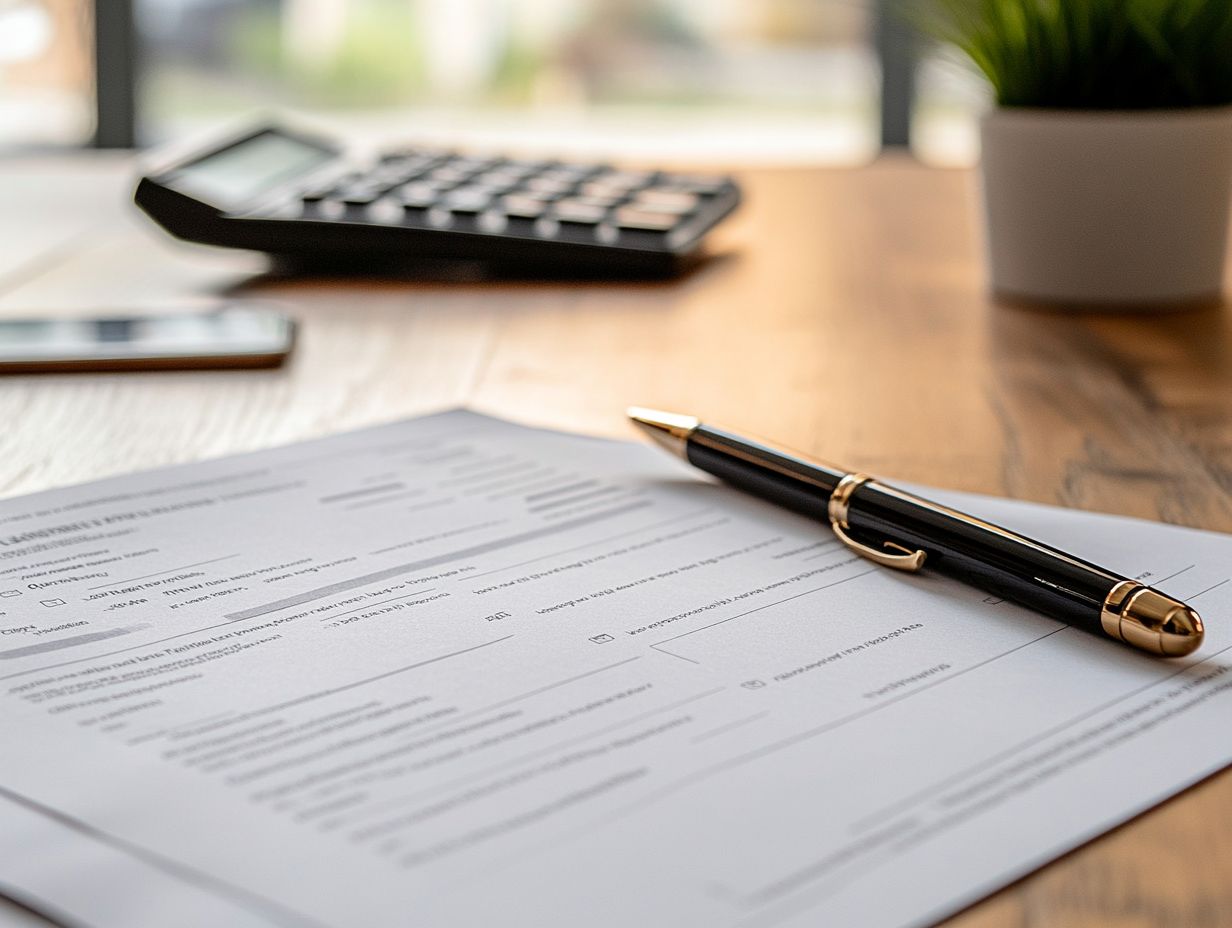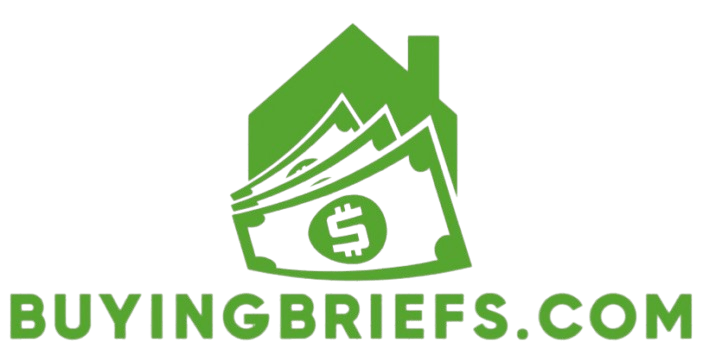What Are Closing Disclosure Documents?
Closing Disclosure Documents are vital to the home-buying journey, serving as a thorough summary of the loan terms and costs linked to your mortgage. Understanding these documents can save you from costly surprises down the line.
Grasping the details within these documents is essential for ensuring you are completely informed before putting pen to paper.
This guide delves into what Closing Disclosure Documents entail, their significance, the critical information they hold, how to obtain them, and tips for reviewing and comprehending their nuances. As you go through the real estate process, this will empower you to make decisions with confidence.
Contents
Key Takeaways:

1. Closing Disclosure Documents are an essential part of the homebuying process, providing important information about loan terms, closing costs, and fees.
2. Obtaining Closing Disclosure Documents is typically the responsibility of the lender and should be received at least three days before closing.
3. Reviewing and understanding Closing Disclosure Documents is crucial in ensuring all information is accurate and any confusing details are clarified.
Understanding Closing Disclosure Documents
Understanding Closing Disclosure Documents is crucial for you, whether you re a homebuyer or seller in a real estate transaction. These documents hold essential financial details that outline the terms and conditions of your mortgage loan.
This includes closing costs, loan amount, interest rate, and monthly payments. The Closing Disclosure Form brings clarity to the transaction, ensuring that you re fully aware of your fiscal responsibilities before sealing the deal.
It is also regulated by the Consumer Financial Protection Bureau (CFPB), which underscores its significance in the mortgage closing process.
What are Closing Disclosure Documents?
Closing Disclosure Documents are essential formal financial statements that lay out the specifics of your mortgage loan transaction. These documents play a vital role in ensuring that everyone involved has a clear grasp of the financial commitment at hand.
Within the Closing Disclosure, you ll find crucial details such as the total loan amount, the interest rate, and the estimated monthly payment. This information enables you to evaluate your budget and financial capacity effectively.
Additionally, it outlines various costs tied to the transaction, including taxes, insurance, and closing fees. Unlike the initial estimates you may have received, these final documents present a verified account of the terms and costs, giving you a transparent overview to help you avoid any unexpected surprises when you sit down at the closing table.
Importance of Closing Disclosure Documents

Closing Disclosure Documents are crucial for every homebuyer! They are an essential tool for you to grasp the financial nuances of your mortgage loan.
They ensure transparency regarding closing costs and loan terms, all while being regulated by the CFPB to protect your interests. This vital document meticulously outlines every facet of the transaction, detailing the total amount you’ll pay and categorizing each cost involved from lender fees to escrows for property taxes.
With this clear breakdown in hand, you gain the power to compare figures and negotiate if needed, enabling you with a sense of confidence and control. Ultimately, utilizing Closing Disclosures paves the way for a smoother closing process, minimizing the likelihood of last-minute surprises that could complicate or delay your home purchase.
What Information is Included in Closing Disclosure Documents?
Closing Disclosure Documents serve as detailed statements that encapsulate crucial information pertaining to a mortgage loan. This includes essential elements such as loan terms, closing costs, monthly payments, and Escrow Details.
For both homebuyers and sellers, grasping this information is vital before finalizing a real estate transaction. Understanding these details enables you to make informed decisions and navigate the process with confidence.
Escrow refers to a financial arrangement where a third party holds and manages funds until certain conditions are met.
Loan Terms and Costs
Loan terms and costs in the Closing Disclosure are important for understanding your financial commitments as a homebuyer. They lay out the loan amount, interest rate, and expected monthly payments, along with various closing costs.
These figures are more than just numbers; they give you a clearer view of what to expect throughout your mortgage. The interest rate, for instance, significantly impacts the total cost of your home over the life of the loan. Meanwhile, monthly payments represent an ongoing commitment to your budget.
Understanding closing costs such as appraisal fees, title insurance, and prepaid taxes helps you evaluate your upfront financial obligations. Grasping these details allows you to navigate your financial future more effectively and make informed decisions that align with your long-term goals.
Closing Costs and Fees

Reviewing the closing costs and fees detailed in the Closing Disclosure is essential for you as a homebuyer. These costs cover a variety of expenses, including escrow details, property taxes, homeowner insurance, and mortgage insurance, all of which influence the final amount you’ll need to close on your property.
Understanding these costs helps you prepare financially and avoid any surprises at the closing table. Each fee carries its own significance in the transaction; some are one-time charges, while others recur.
For example, escrow fees cover services provided by a neutral party who manages the money during the transaction. Property taxes contribute to local services like schools and infrastructure. Homeowner insurance protects you from potential damages, while mortgage insurance safeguards lenders in case of default.
Breaking down these components gives you valuable insights into your purchase. This ensures you’re well-equipped for the responsibilities that come with homeownership.
Other Important Information
Other essential details in the Closing Disclosure include key financial information that goes beyond loan terms and costs. You ll find the loan estimate, insights on home refinancing options, and comparisons with the HUD-1 Settlement Statement.
This document clearly outlines the cash required to close and provides a breakdown of the loan s interest rates and monthly payments. Understanding these details can significantly impact your budgeting strategy.
Don’t miss the summary of mortgage insurance payments; understanding this is crucial for your homeownership costs! The Closing Disclosure also highlights the annual percentage rate (APR), which captures the true cost of borrowing, fees included.
By carefully examining these sections, you can make informed decisions that align your financial commitments with your long-term goals.
How to Obtain Closing Disclosure Documents
Obtaining Closing Disclosure Documents is a vital step in your mortgage journey.
Your lender will typically provide these documents after your loan is approved. This ensures that you have a clear understanding of all the terms before moving forward with the final transaction.
This understanding is essential for avoiding unexpected costs at closing. It’s an important moment that sets the stage for a smooth closing process.
Who Provides Closing Disclosure Documents?

Closing Disclosure Documents are essential tools provided by lenders or mortgage companies to you, the homebuyer, as part of your loan process. They ensure transparency and clarity regarding the financial details of your transaction.
This important step allows you to review all the terms and costs associated with your mortgage well ahead of your closing date. You ll find crucial information such as interest rates, monthly payment amounts, and potential fees laid out for your consideration.
By carefully analyzing these documents, you can ask questions and address any discrepancies. This paves the way for a smoother transition as you approach the final steps of your home-buying journey.
Typically, you ll receive the Closing Disclosure three days before closing. This fits seamlessly into your timeline and helps to mitigate any last-minute surprises that could derail your transaction.
When are Closing Disclosure Documents Received?
Homebuyers usually receive documents that outline the final mortgage terms at least three days before the closing date. This rule, set by the CFPB, gives you a chance to review the details and ask any pressing questions.
This crucial period allows you to understand your financial obligations fully. These documents include the final terms of your mortgage, such as the interest rate, monthly payments, and closing costs. Taking the time to review this information helps clarify any uncertainties, enabling you to make informed choices and avoid unexpected surprises on closing day.
Understanding this timeline is critical. It gives you confidence in your purchase and helps avoid surprises on closing day!
Reviewing and Understanding Closing Disclosure Documents
Reviewing and understanding these documents is essential for you as a homebuyer. They provide a valuable opportunity to ensure that all financial details meet your expectations.
By taking the time to examine this information, you can make informed decisions and proceed with confidence in your homebuying journey.
Key Sections to Pay Attention to
Let s dive into the most important parts of your Closing Disclosure Documents! When reviewing, focus on key sections like loan terms, closing costs, and monthly payments.
These areas contain essential financial details that can significantly impact your mortgage experience. Understanding the specifics allows you to gauge the long-term implications of your financing choices.
For example, the loan terms outline your interest rate and the duration of the mortgage, while the closing costs break down all related fees to settle at the deal’s conclusion.
By scrutinizing your monthly payments, you can determine if they align with your budget and financial plans. By focusing on these critical areas, you can make informed decisions and ensure you fully grasp the financial commitments tied to your new home.
Clarifying Any Confusing Information
Clarifying any confusing information in the Closing Disclosure is essential for homebuyers. Misunderstandings can lead to unexpected financial obligations.
Review each section of this important document carefully. Make note of any unclear terms or figures.
If you have doubts, reach out to your lender. They should be eager to explain any discrepancies.
Seeking help from a real estate professional can also provide reassurance. They understand the nuances of the Closing Disclosure and can make the information clearer.
This guidance will help you make informed decisions every step of the way.
Frequently Asked Questions
What Are Closing Disclosure Documents?
Closing Disclosure documents are legal forms that lenders provide to borrowers before completing a mortgage loan transaction.
Why Are Closing Disclosure Documents Important?
They outline all the financial details of the mortgage, including terms, interest rates, closing costs, and fees. They provide transparency and protection for borrowers.
Who Is Responsible for Preparing Closing Disclosure Documents?
The lender prepares and provides these documents. They must ensure accuracy and compliance with legal requirements.
What Information Is Included in Closing Disclosure Documents?
These documents include loan terms, amounts, interest rates, estimated monthly payments, closing costs, and any applicable escrow account details.
When Should a Borrower Receive Closing Disclosure Documents?
Legally, borrowers must receive these documents at least three business days before closing. This gives them time to review and ask questions.
Can a Borrower Request Changes to Closing Disclosure Documents?
Yes, borrowers can request changes if they spot errors. The lender must provide a corrected form at least three business days before closing.




